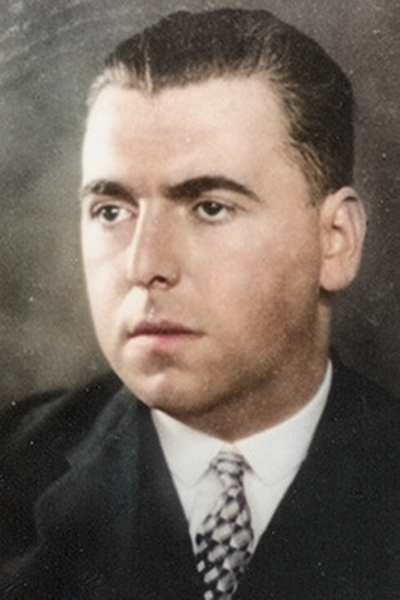Erwin Schulhoff

Born: June 8, 1894, Prague, Czechia [now Czech Republic]
Died: August 18, 1942, Wülzburg, Germany
Concertino for Flute, Viola and Contrabass
- Composed: May 28 - June 1, 1925
- Premiere: July 25, 1926 at the Donaueschinger Musiktage, performed by Hermann Wilhelm Draber, flute; Paul Hindemith, viola and Rudolf Hindemith, double bass
- Duration: approx. 16 minutes
The history of chamber works for flute, viola and double bass has surprisingly deep roots: as early as the 18th century, Austrian bassist and composer Johannes Matthias Sperger composed both a chamber trio as well as a Sinfonia Concertante for this unusual combination. The appeal of the instrumentation is clear: it provides the composer with a variety of tone colors, textures and a range of more than seven octaves. Nearly 150 years later, in 1925, composer Erwin Schulhoff found a means to exploit all of those possibilities in his Concertino.
Schulhoff’s reputation as a composer was blossoming at the same time that the political landscape of 1920s Europe was beginning to shift. An enthusiastic defender of the Viennese school, Schulhoff had embraced the rising avant-garde movement and had been an early supporter of jazz in Germany, as well as of Dadaism and the Soviet socialist realism movement. Over the subsequent decade, he produced a richness of works in these new styles, which challenged the expectations of both performers and audiences. However, he also attracted the undesired attention of the German National Socialists, who eventually banned his compositions and denounced him for his support of Entartete Musik (“degenerate music”). In 1932, when he set the Communist Manifesto to music as a cantata for soloists, chorus and winds (Das Manifest der Kommunistischen Partei, Op. 82), he found himself unable to continue his career in German-speaking countries. He was ultimately deported to the civilian prison in Wülzburg, where he died of tuberculosis in 1942.
The opening movement of Schulhoff’s Concertino for Flute, Viola and Contrabass is a flowing Andante con moto alternating metrically between seven and eight beats to the bar. The flute introduces a florid aria set over the ostinato in the bass and viola. It is when the viola takes over as soloist that the movement takes flight, first playful, then insistent, as it drives to its climax. It settles once again into equilibrium and draws to a close, seemingly unresolved.
The subsequent movement is that most Bohemian of folk dances, a furiant. Here piccolo replaces the flute, highlighting its proletariat roots and giving the piece a folk-like quality, to which the double bass adds a percussive element: string-slapping pizzicato with the left hand while alternately smacking the string with the wood of the bow, a technique known as col legno.
The third movement is a seductive Andante in which each of the three instruments gets its turn to sing. Part love song, part aria, it leaves the listener with a sense of uncertainty through its alternating meters and shifting tonalities.
The piccolo is back for the final movement, a Rondino that is as much sea shanty as it is scherzo. Here, amid tone colors that invoke the impressionism of Ravel, we find other surprises: plucking techniques that stretch the physical capabilities of the stringed instruments, piccolo dampened with a mute, and a musical quote of the Moravian peddlers of shepherds’ pipes from the streets of Prague. The movement dances throughout, and leaps to a satisfying conclusion.
—Dr. Scot Buzza